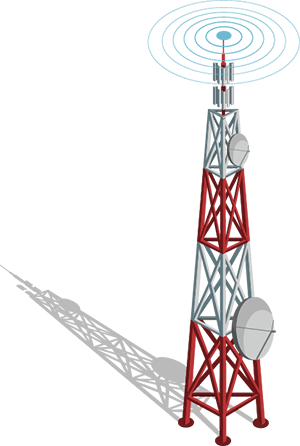
STREGA has selected LoRaWAN™ as its main wireless technological choice for its low power industrial grade sensors.
LoRaWAN™ is a Low Power Wide Area Network (LPWAN) specification intended for wireless battery operated “Things” in a regional, national or global network. LoRaWAN targets key requirements of Internet of Things such as secure bi-directional communication, mobility and localization services. The LoRaWAN specification provides seamless interoperability among smart Things without the need of complex local installations and gives back the freedom to the user, developer, businesses enabling the roll out of Internet of Things.
LoRaWAN network architecture is typically laid out in a star-of-stars topology in which gateways is a transparent bridge relaying messages between end-devices and a central server in the backend. Gateways are connected to the network server via standard IP connections while end-devices use single-hop wireless communication to one or many gateways. Our end-point communication is bi-directional, allowing control back to our sensors. In the case of Strega devices, our concept permits reading and writing (open/close or On/Off) commands).
Communication between end-devices and gateways is spread out on different frequency channels and data rates. The selection of the data rate is a trade-off between communication range and message duration. Due to the spread spectrum technology, communications with different data rates do not interfere with each other and create a set of “virtual” channels increasing the capacity of the gateway. LoRaWAN data rates range from 0.3 kbps to 50 kbps. To maximize both battery life of the end-devices and overall network capacity, the LoRaWAN network server is managing the data rate and RF output for each end-device individually by means of an adaptive data rate (ADR) scheme.
National wide networks targeting internet of things such as critical infrastructure, confidential personal data or critical functions for the society has a special need for secure communication. This has been solved by several layer of encryption:
- Unique Network key (EUI64) and ensure security on network level
- Unique Application key (EUI64) ensure end to end security on application level
- Device specific key (EUI128)
The STREGA devices are supporting the LoRaWAN 1.02 standards and are used succesfully on various Network servers such as TTN, TTI, Orange, Objenious, Comcast, Senet, NNNCo, Meshed, EveryNet, Kerlink Wanesy, ThingPark Actility and many more…





